Galapagos Species Database
The Galapagos Species Database shares the information about the species from our Natural History Collections.
Cordia alliodora
laurel blanco, picana, canalete, ajo, laurel negro, laurel, cypre, Ecuador laurel, salmwood
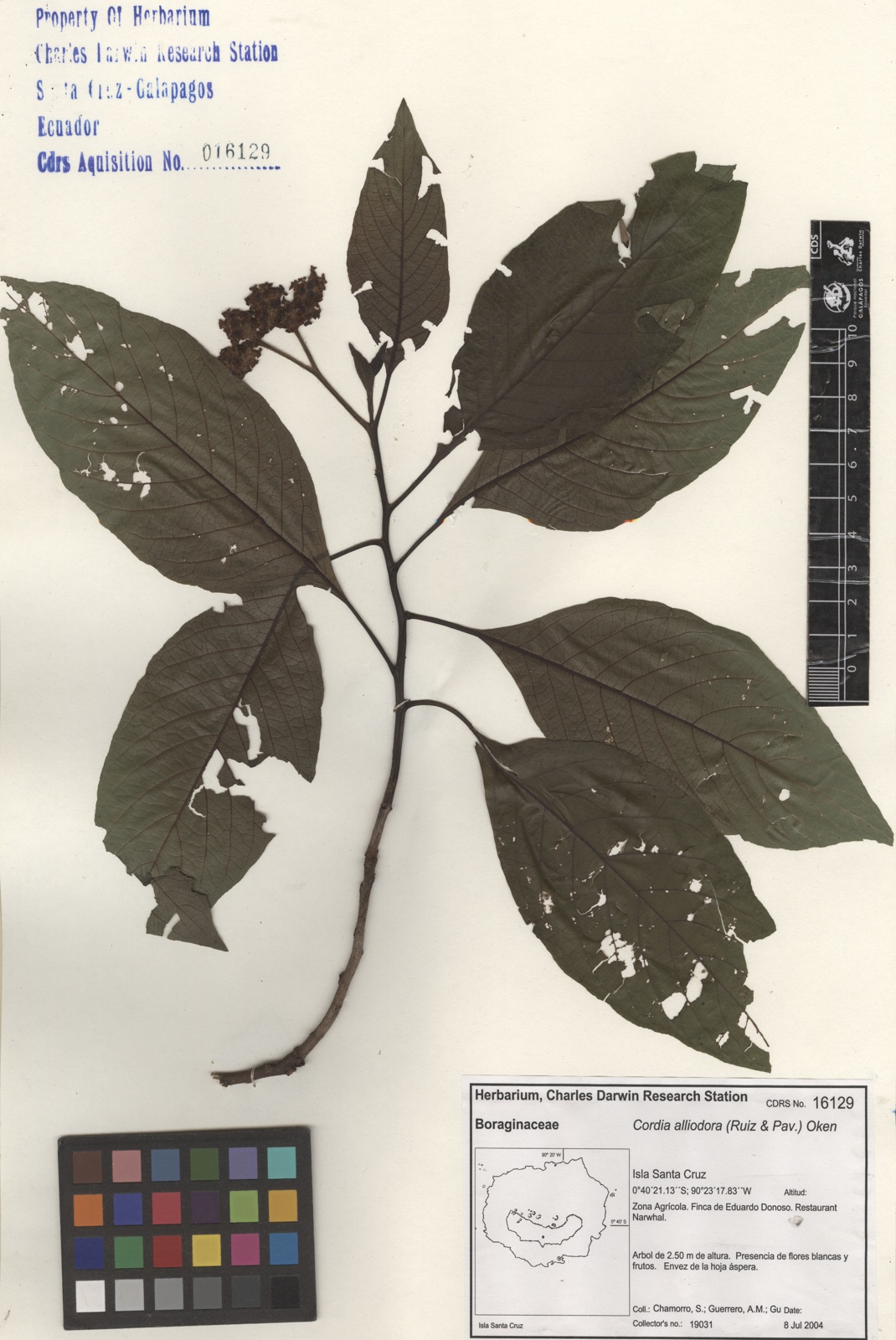
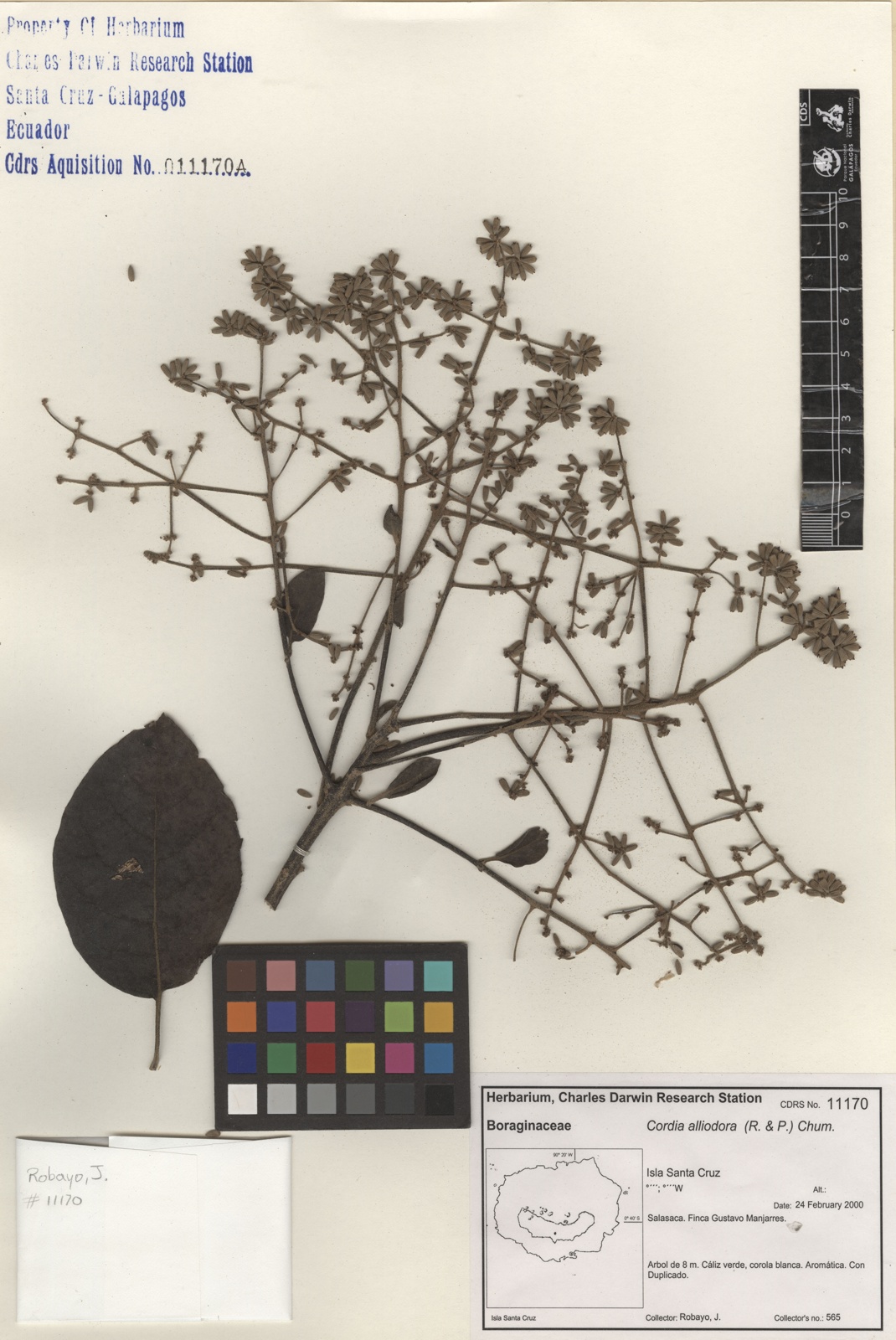
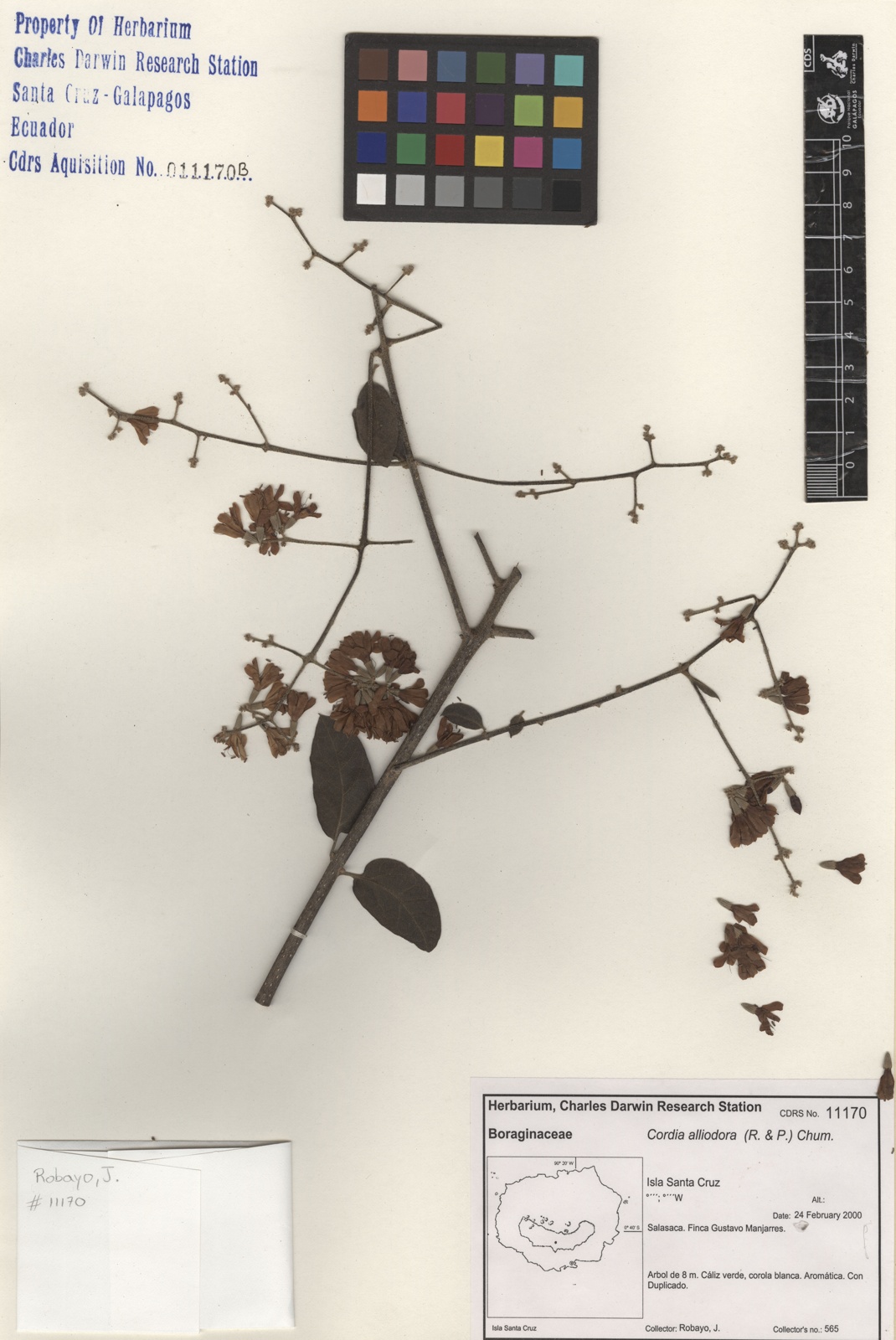
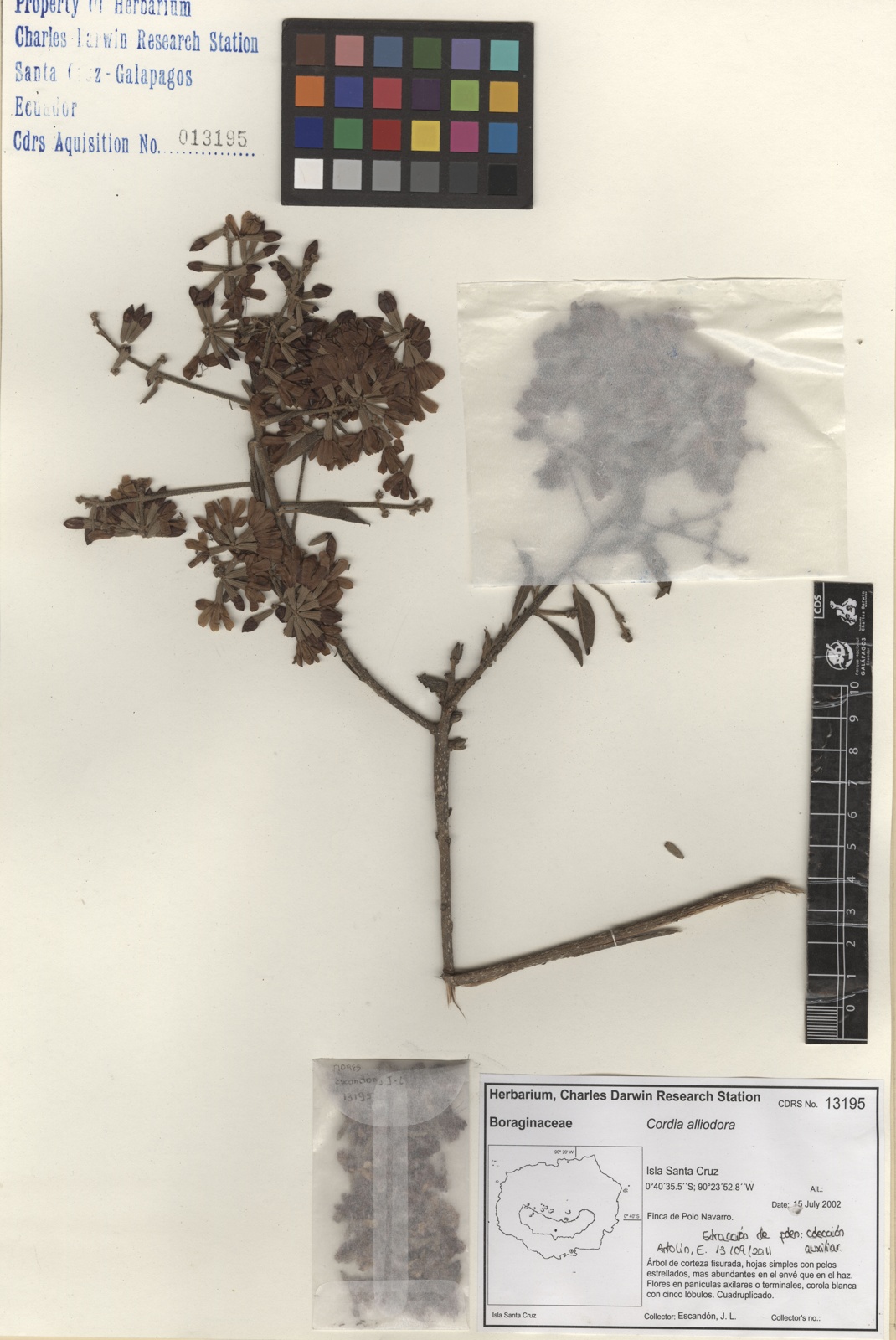
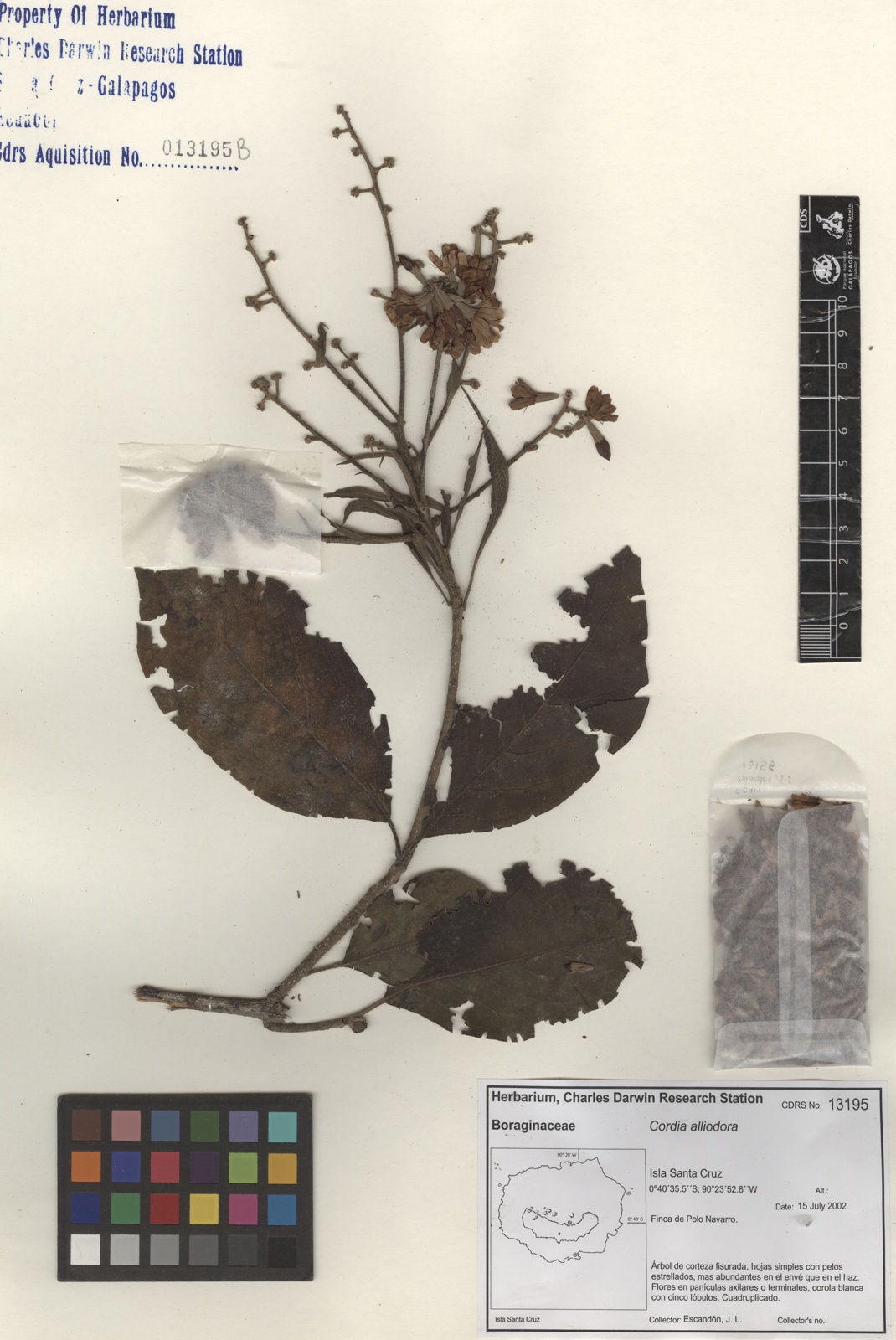
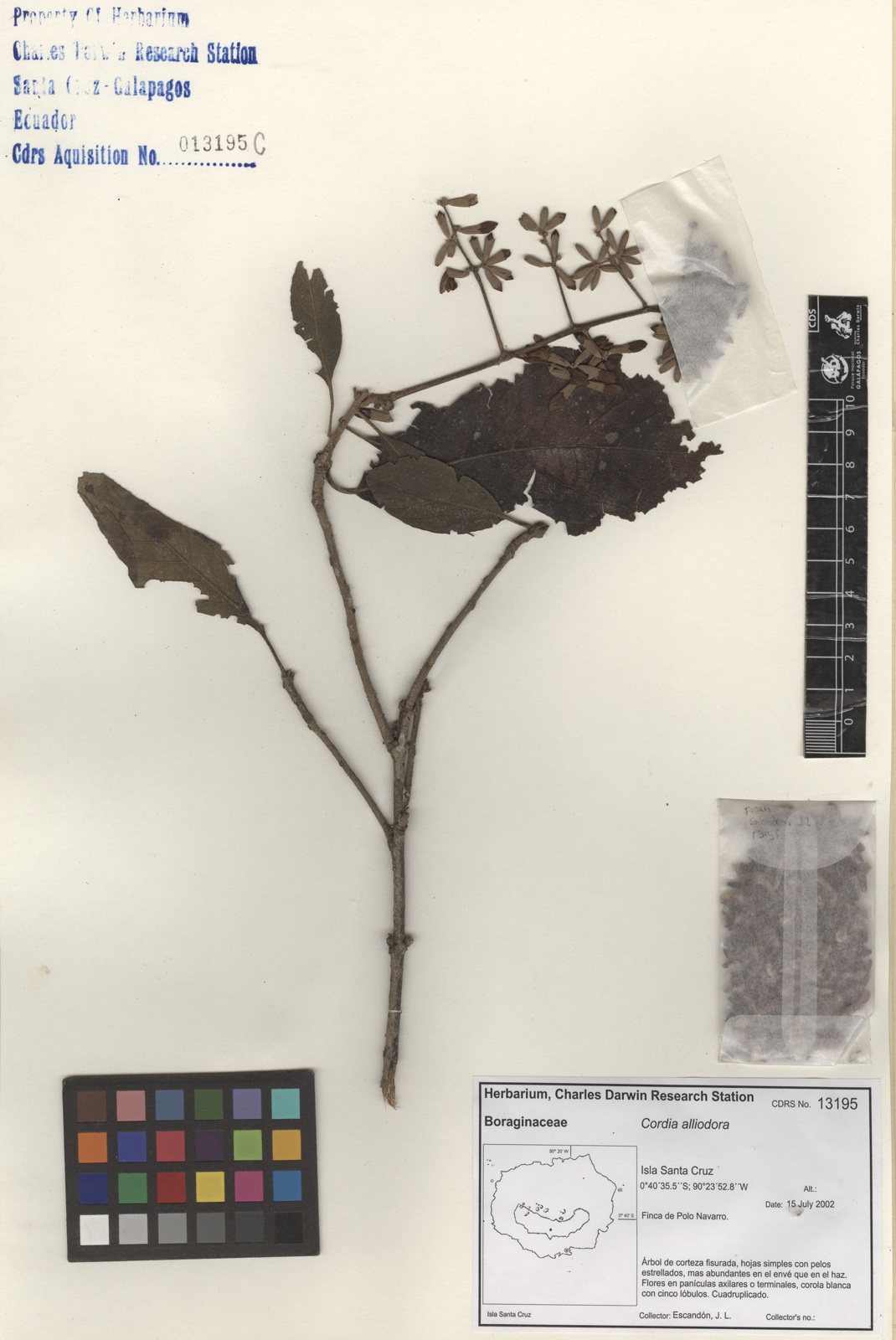
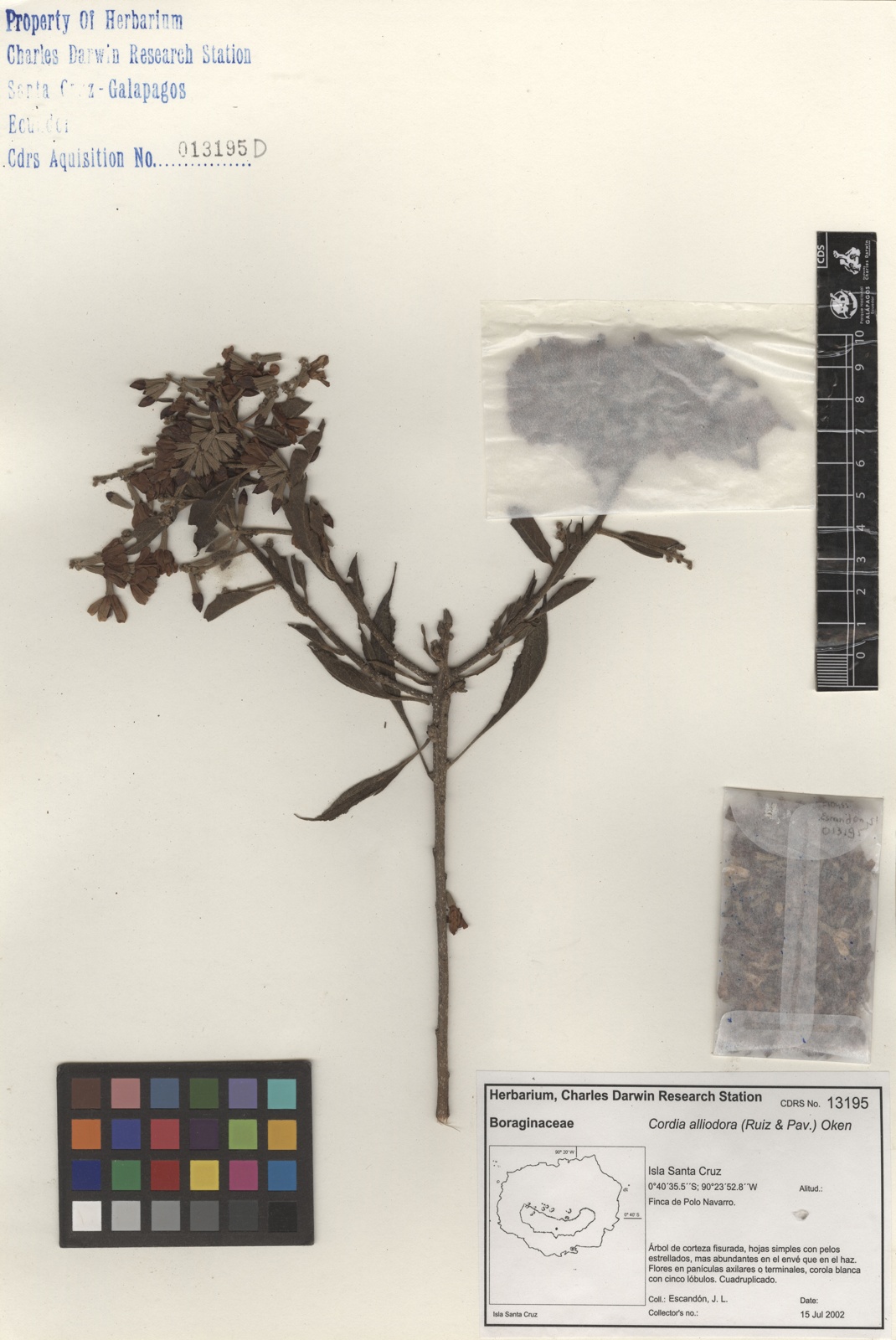
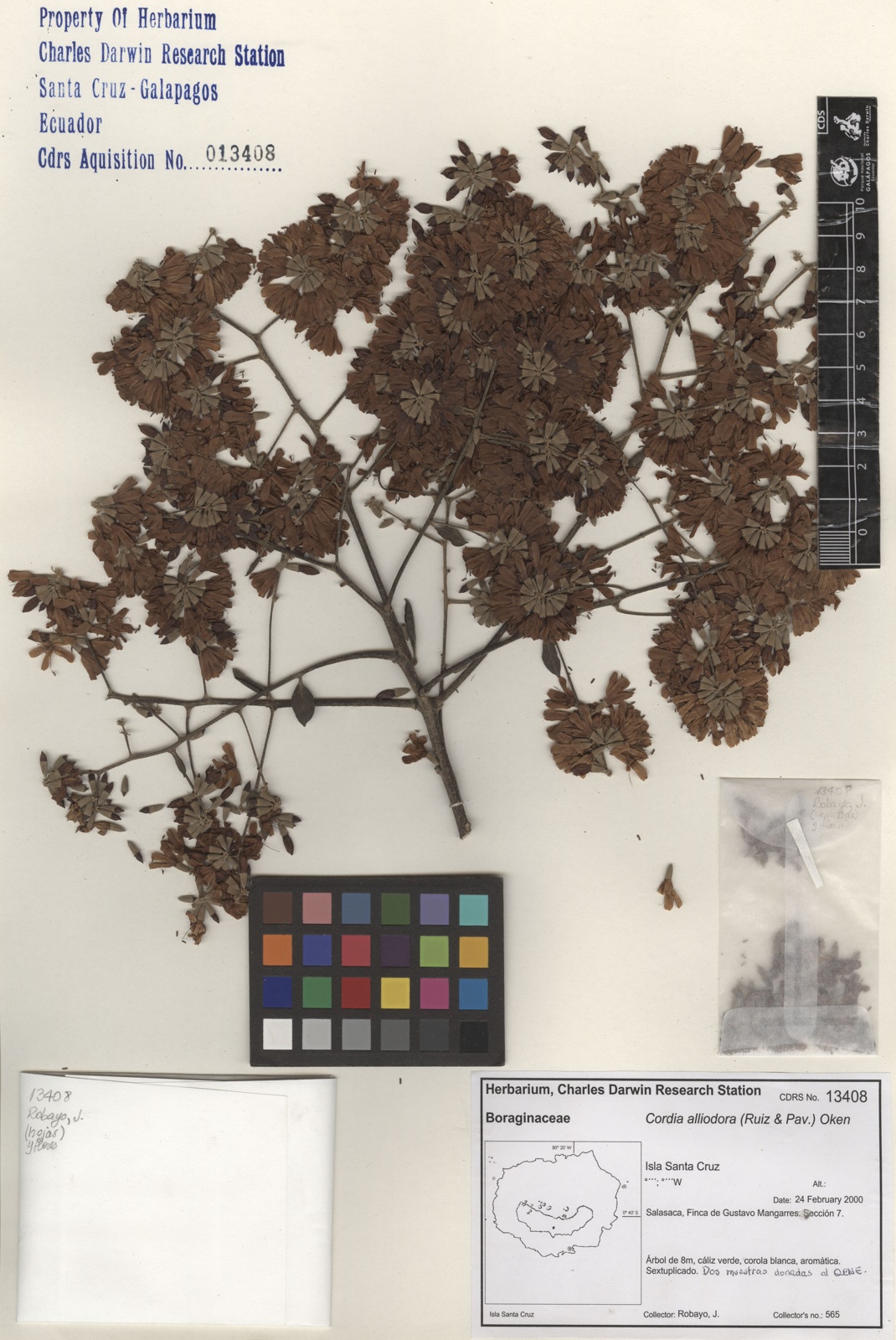
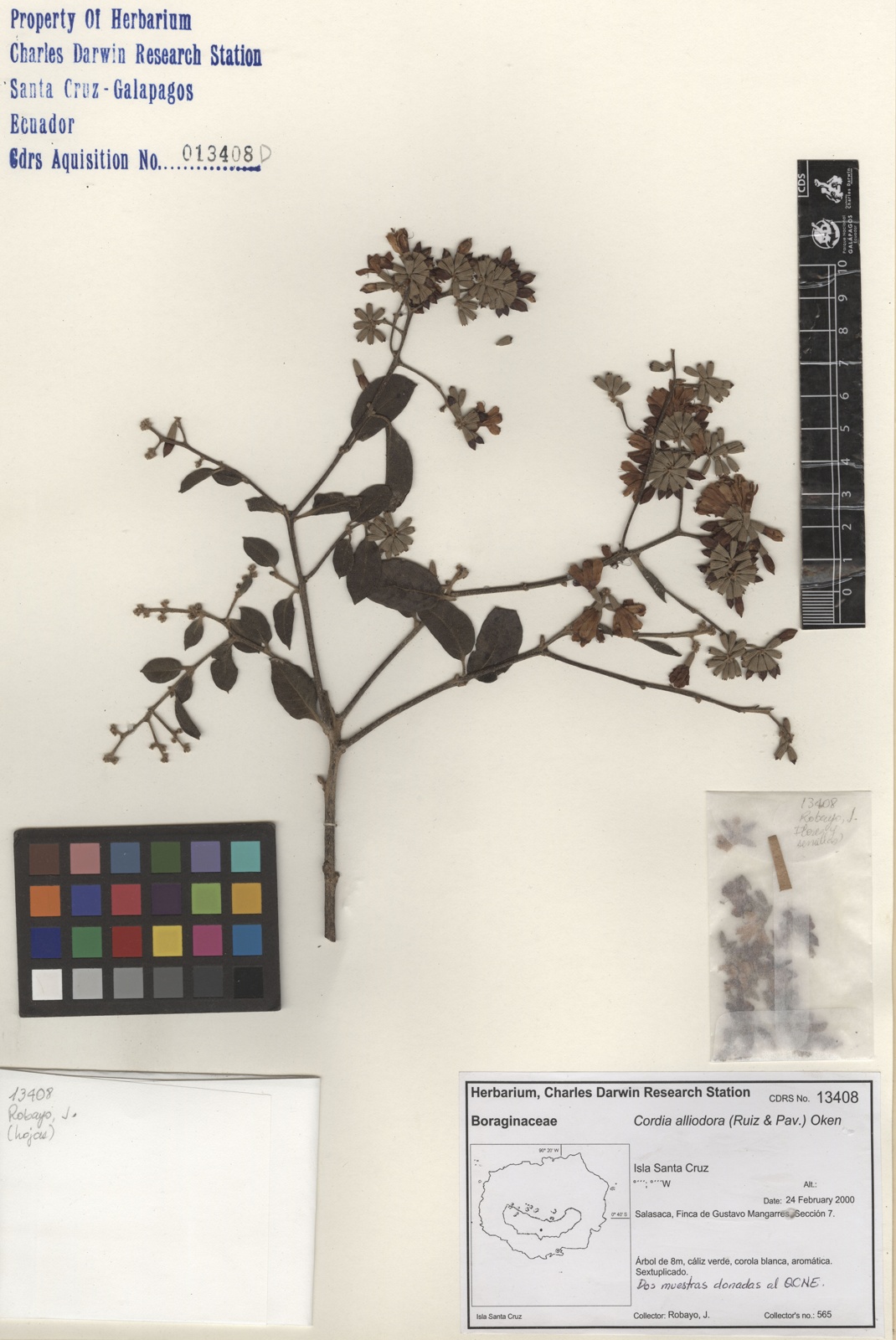
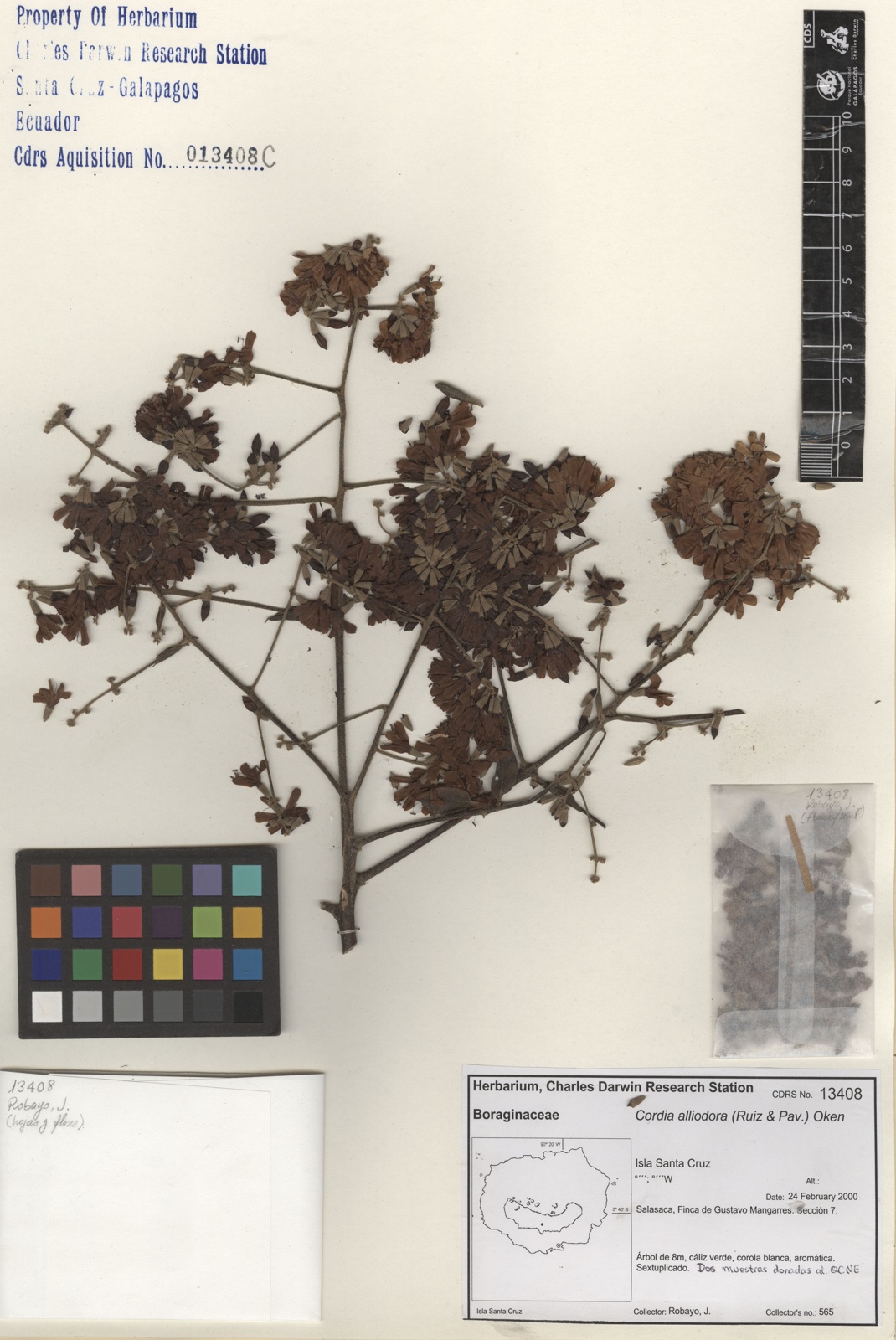


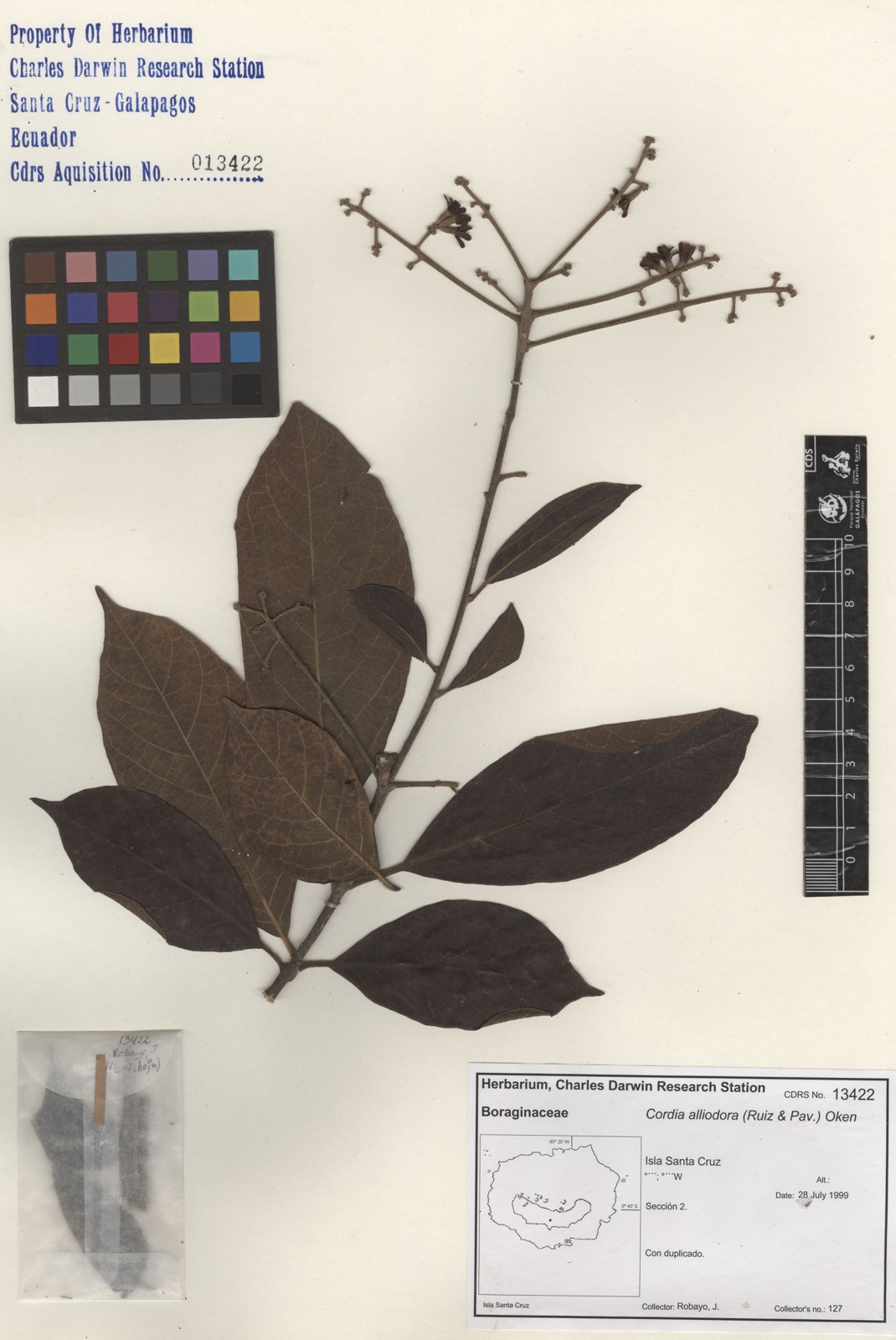
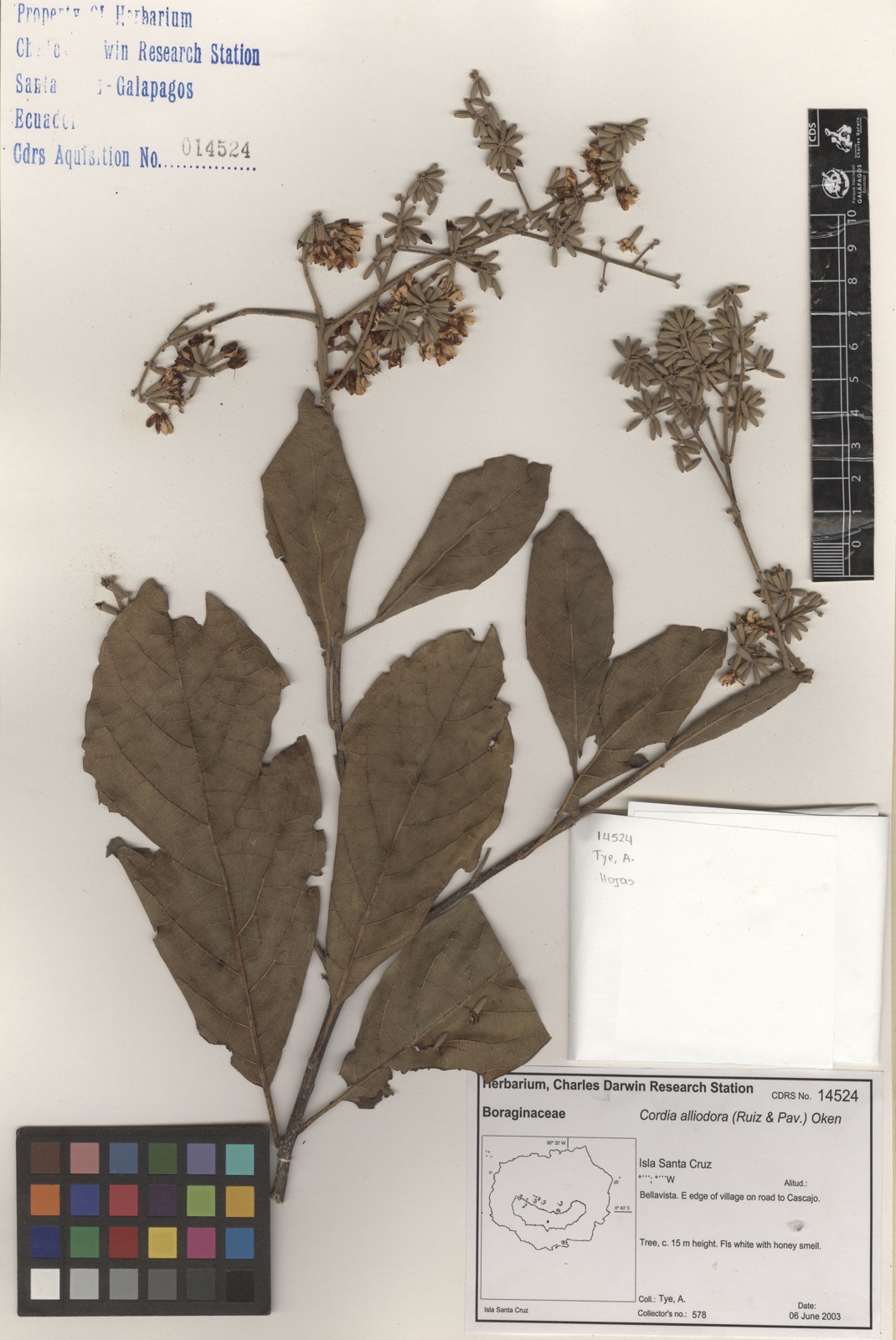
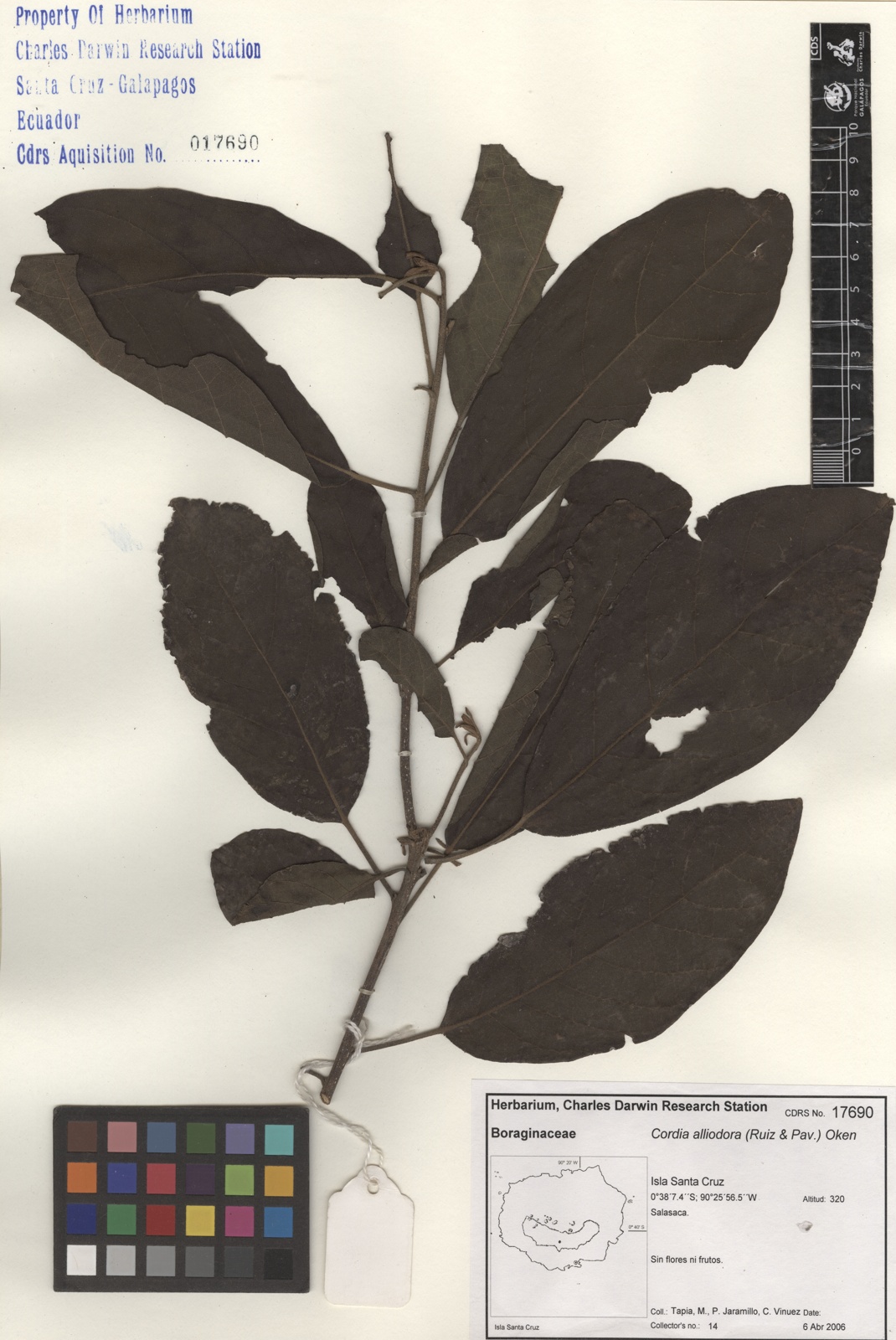
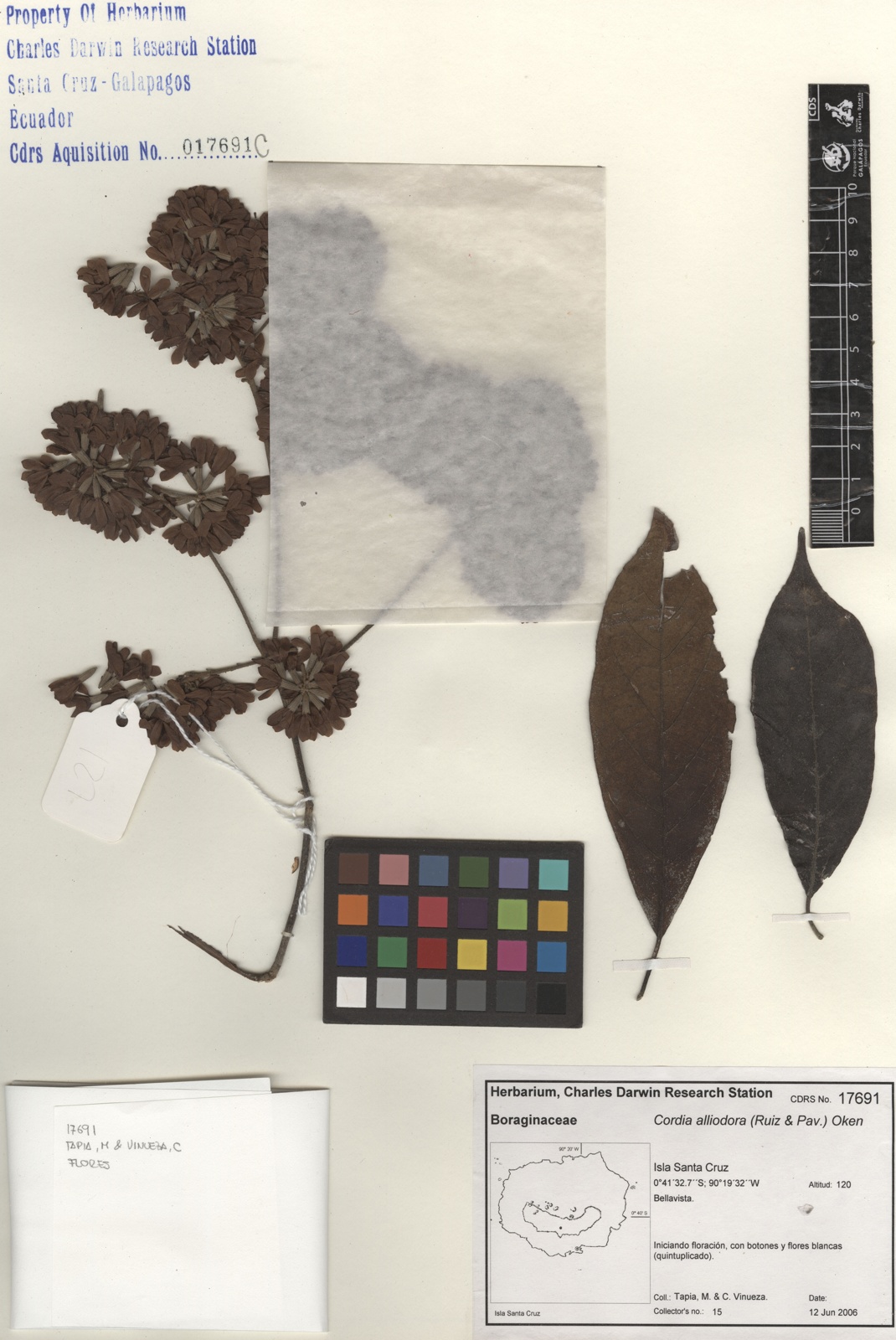
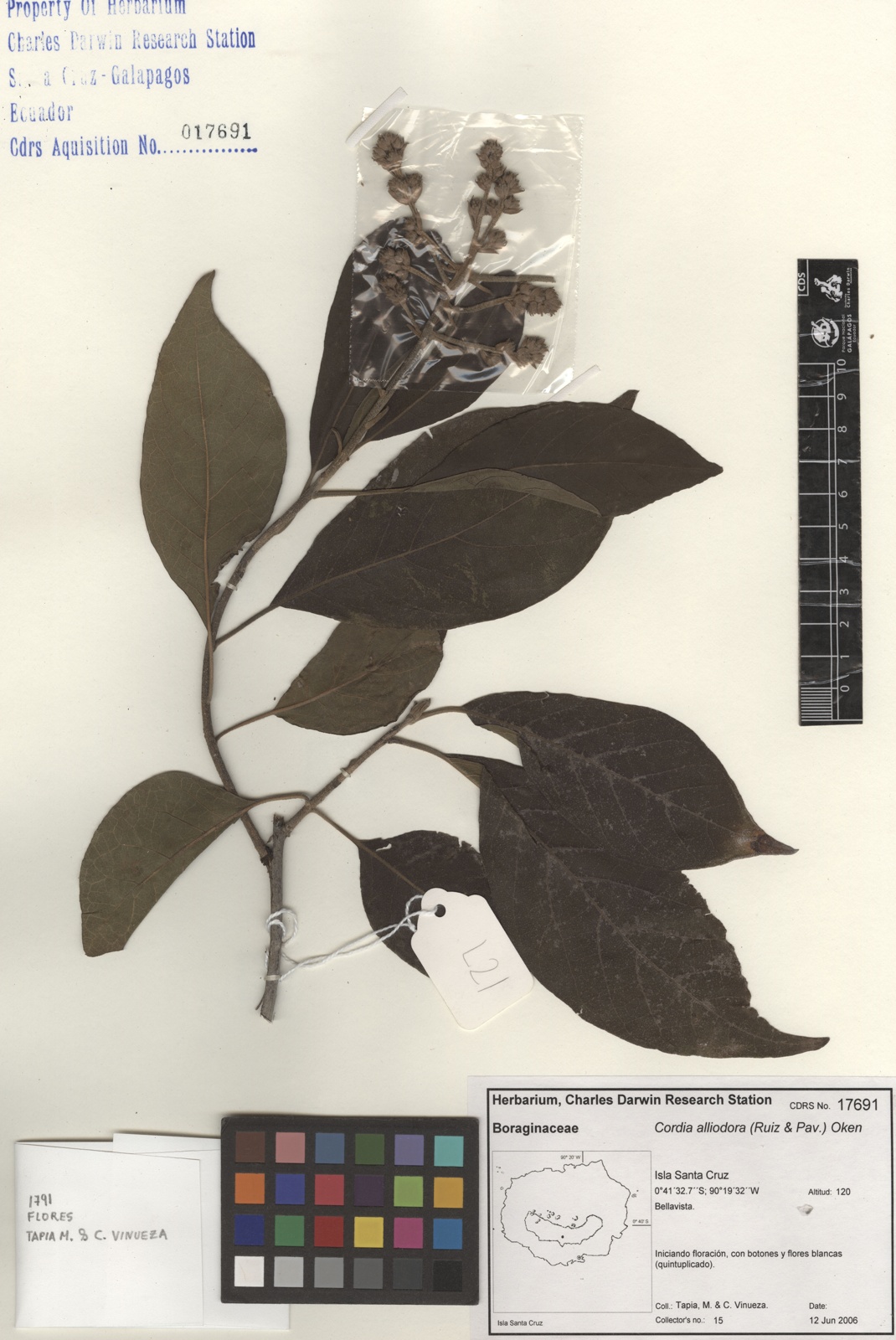
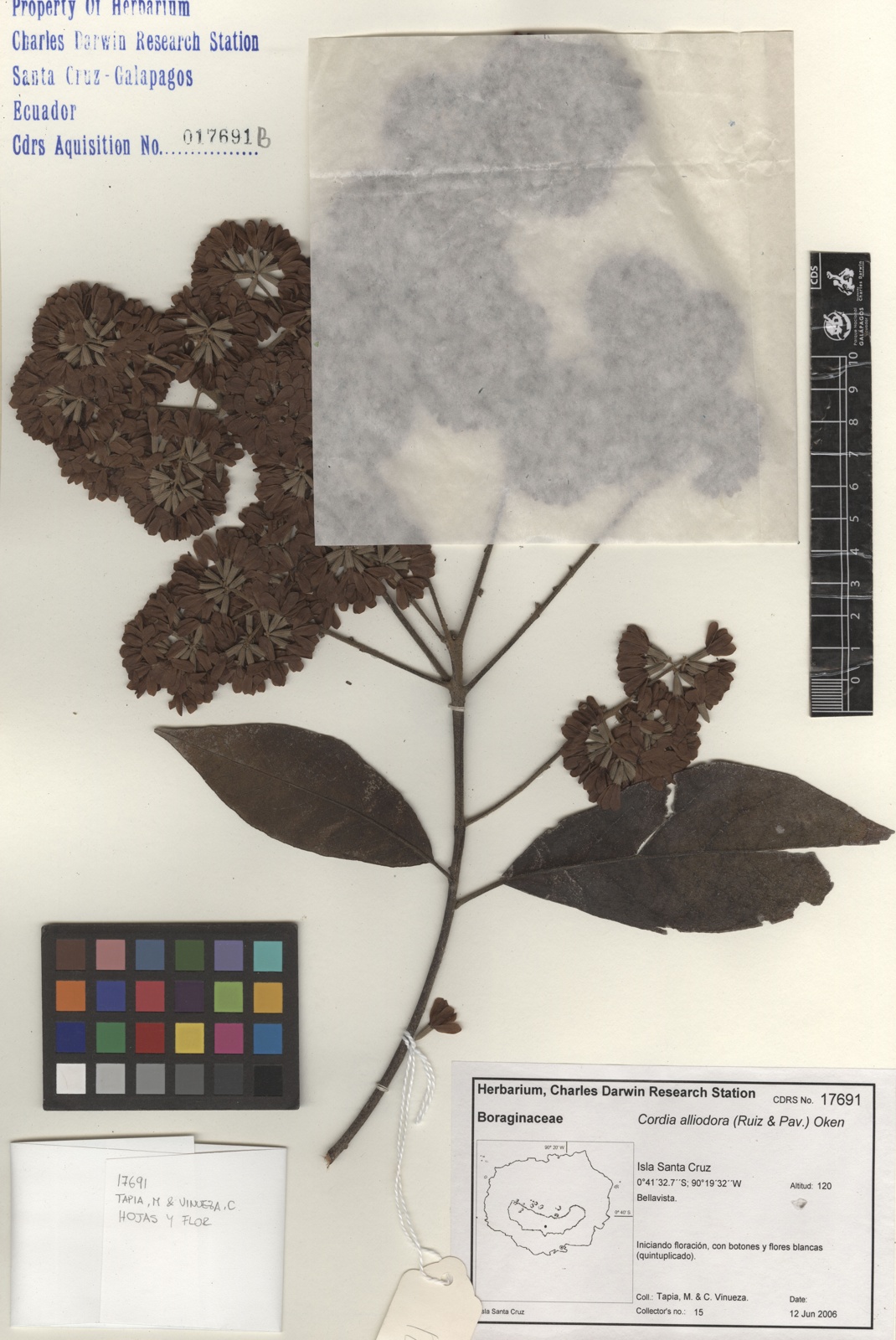

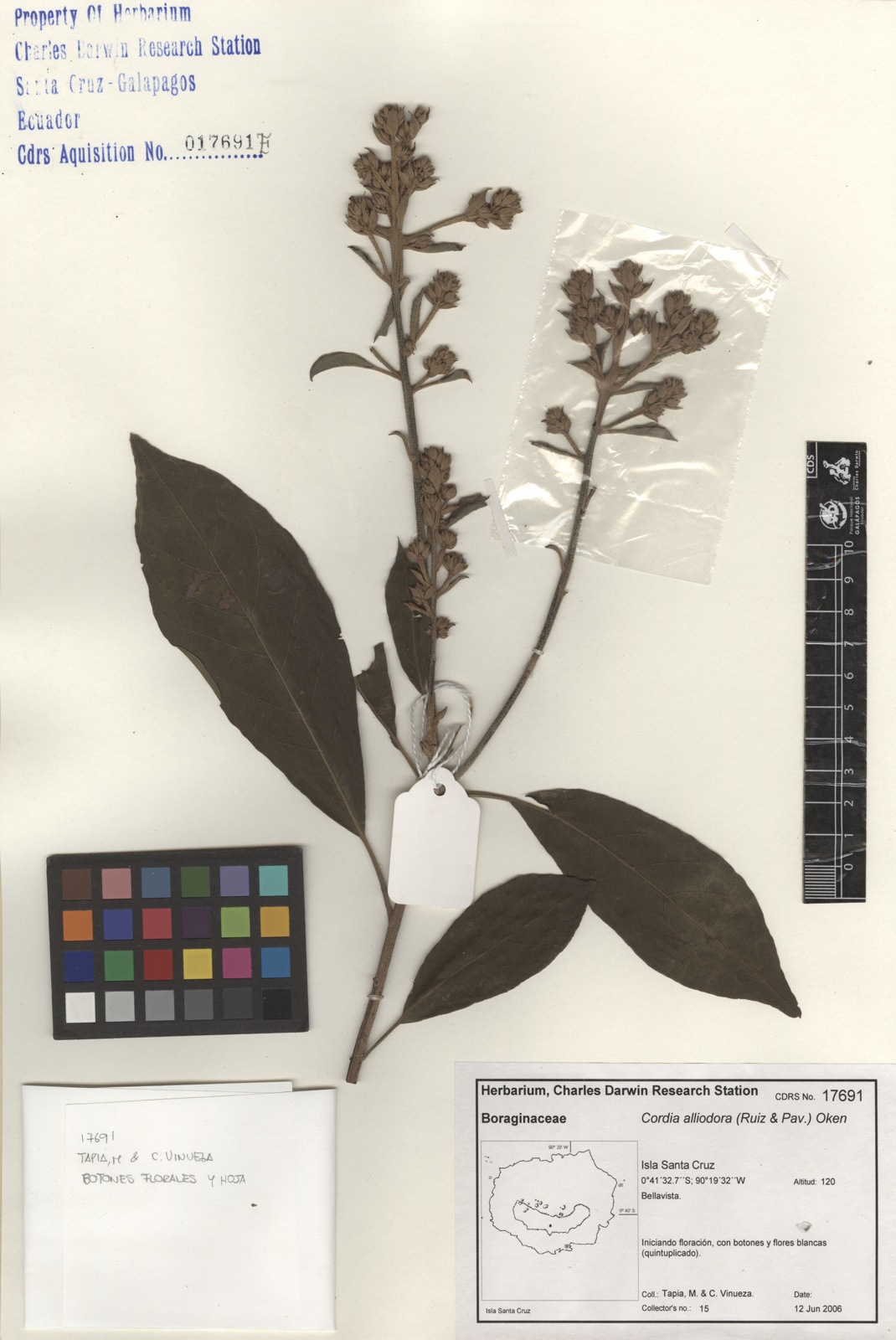

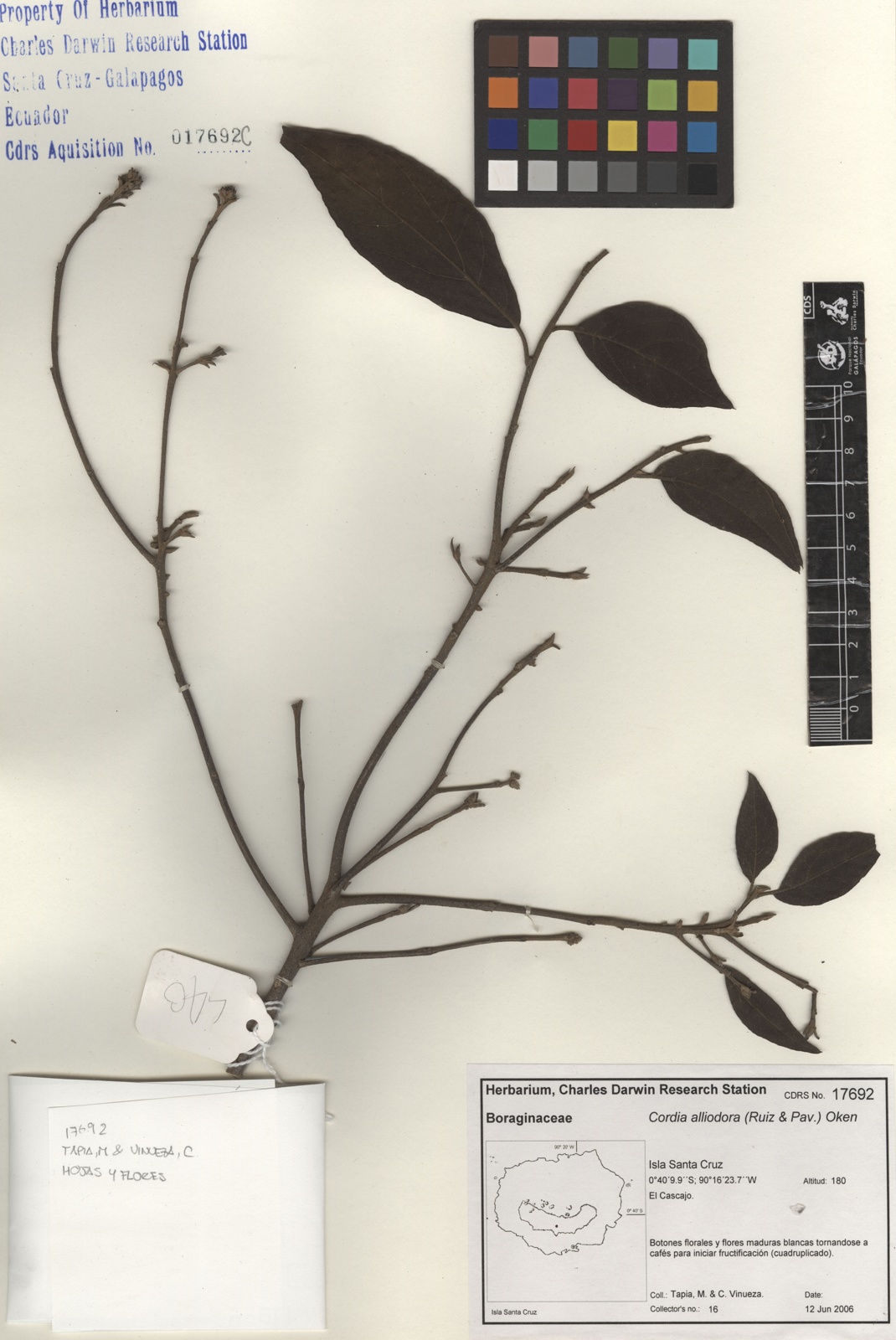
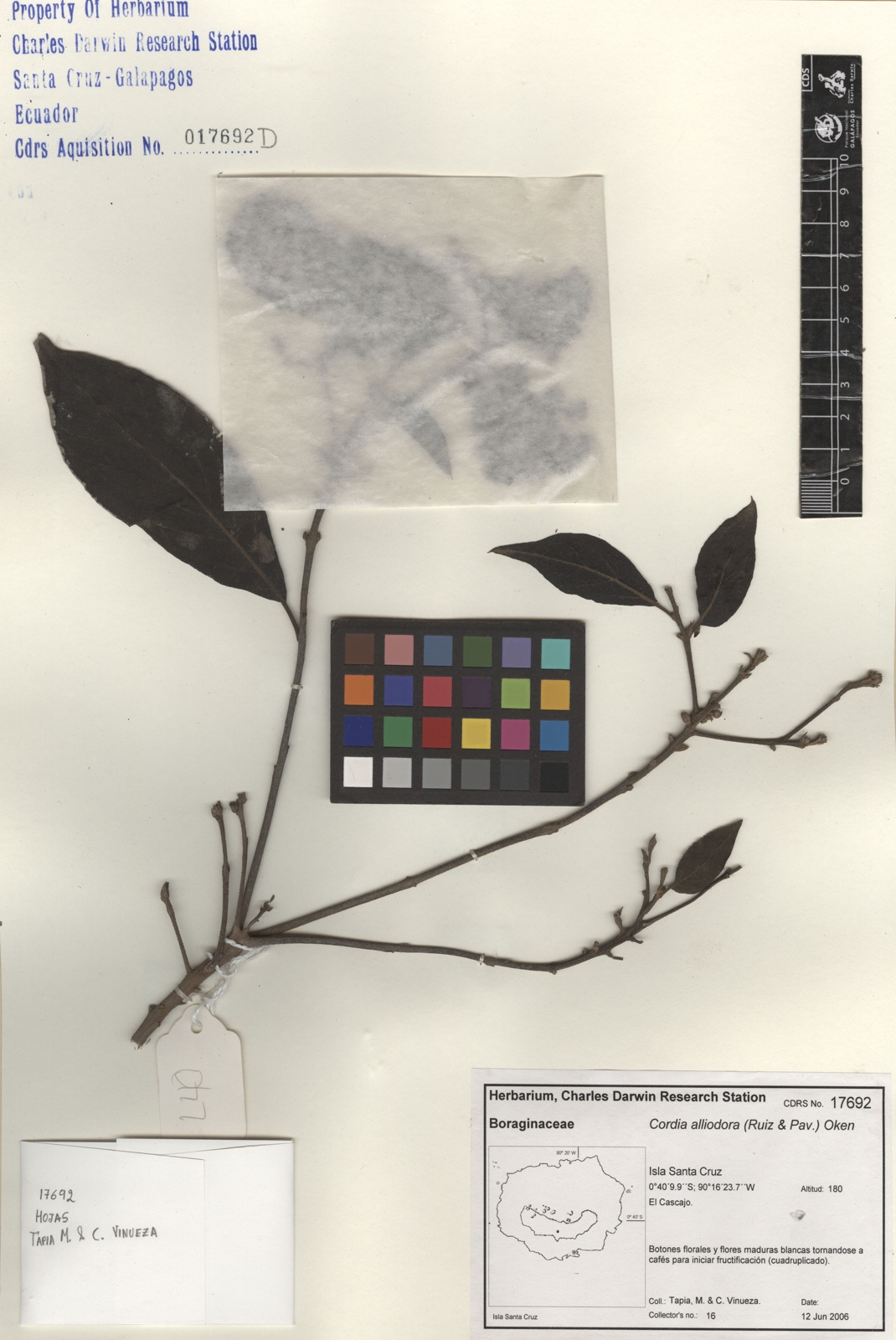
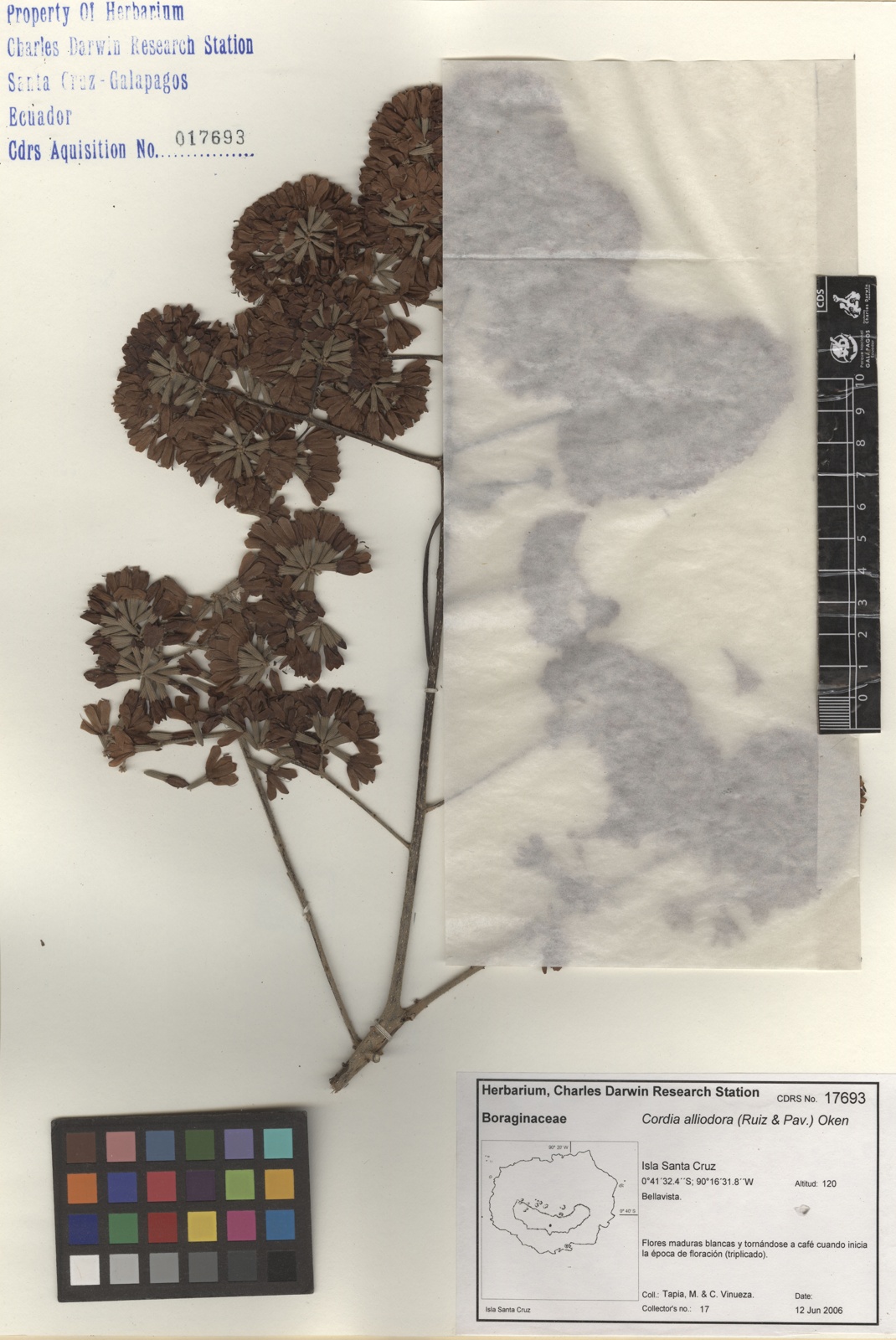
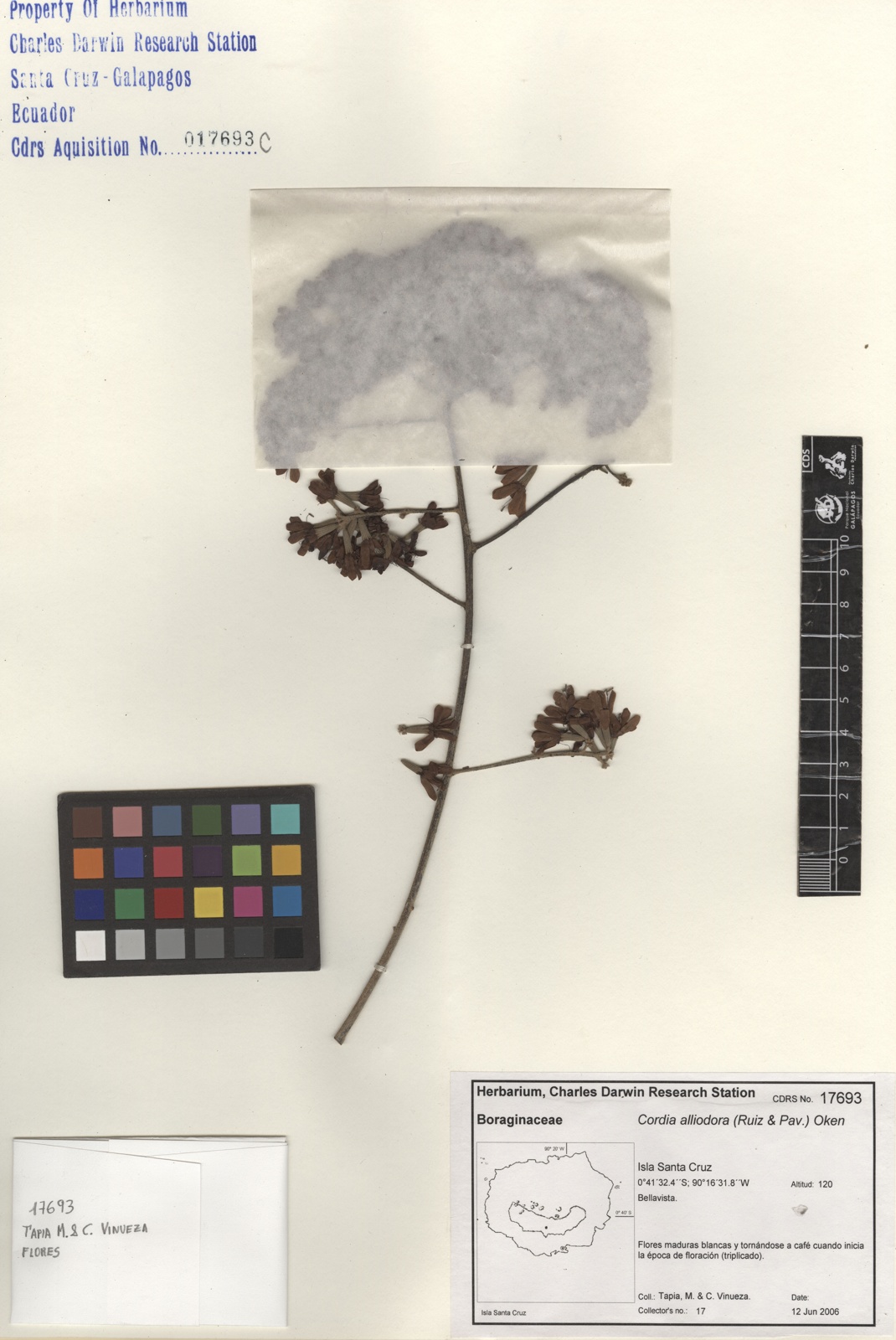
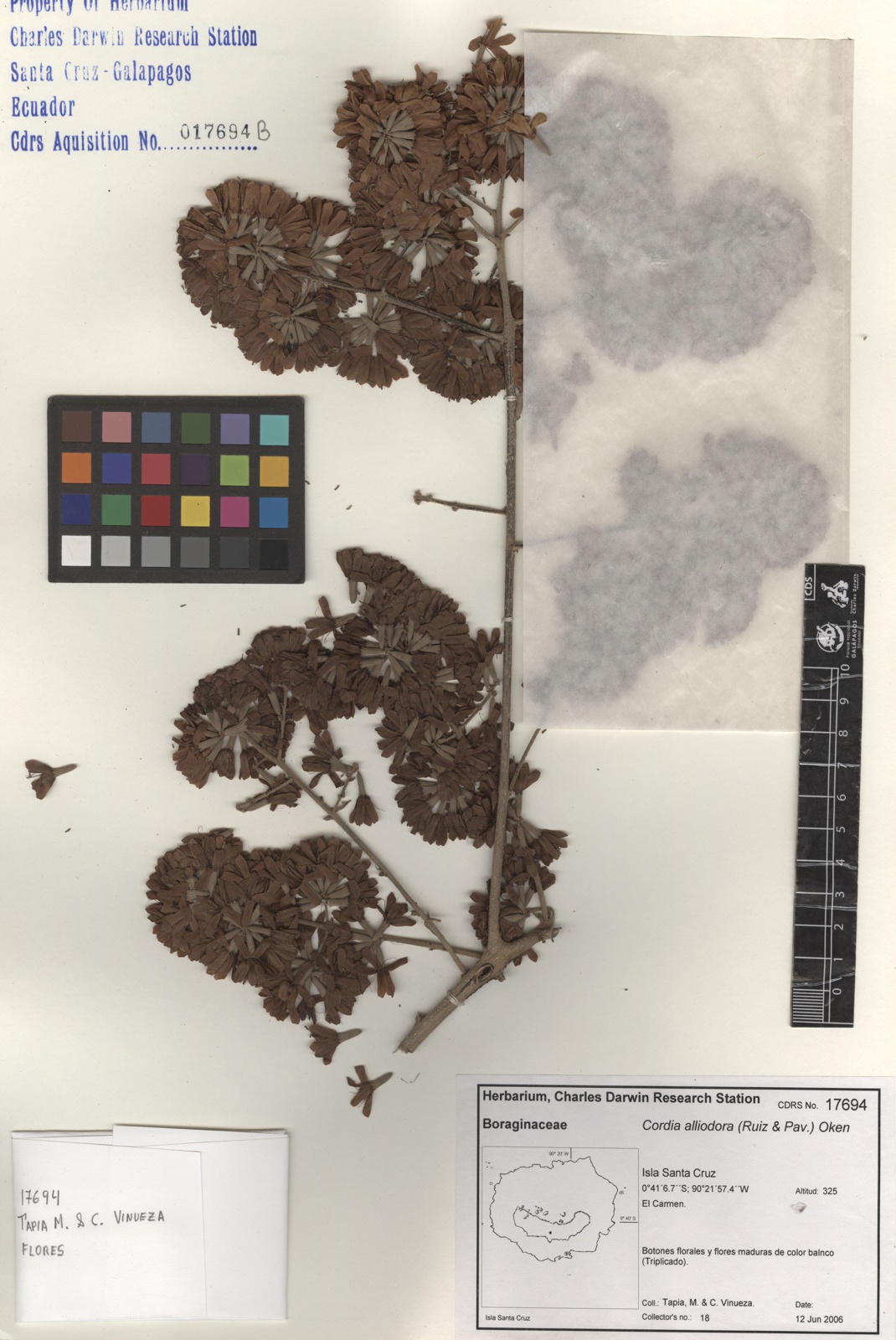
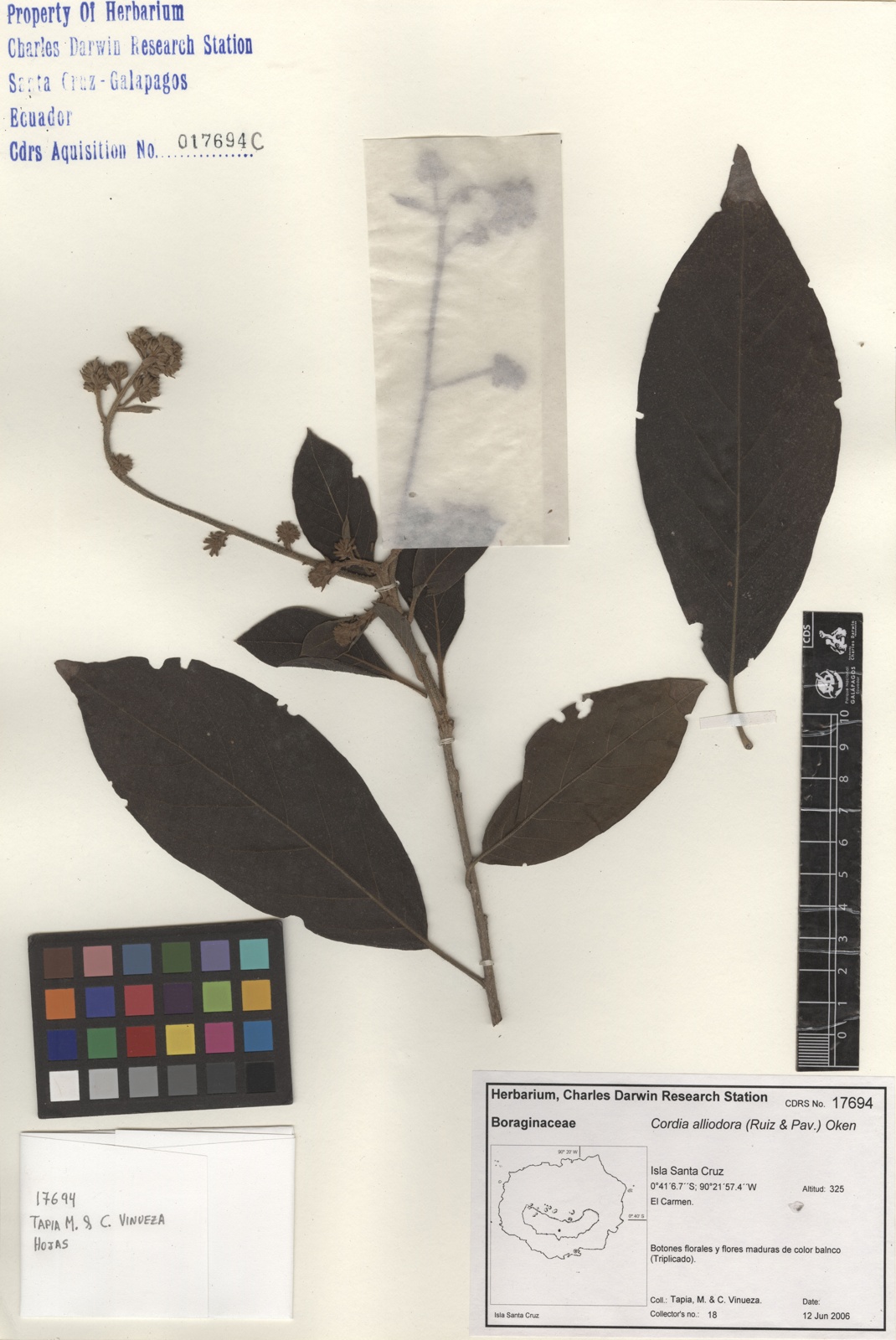
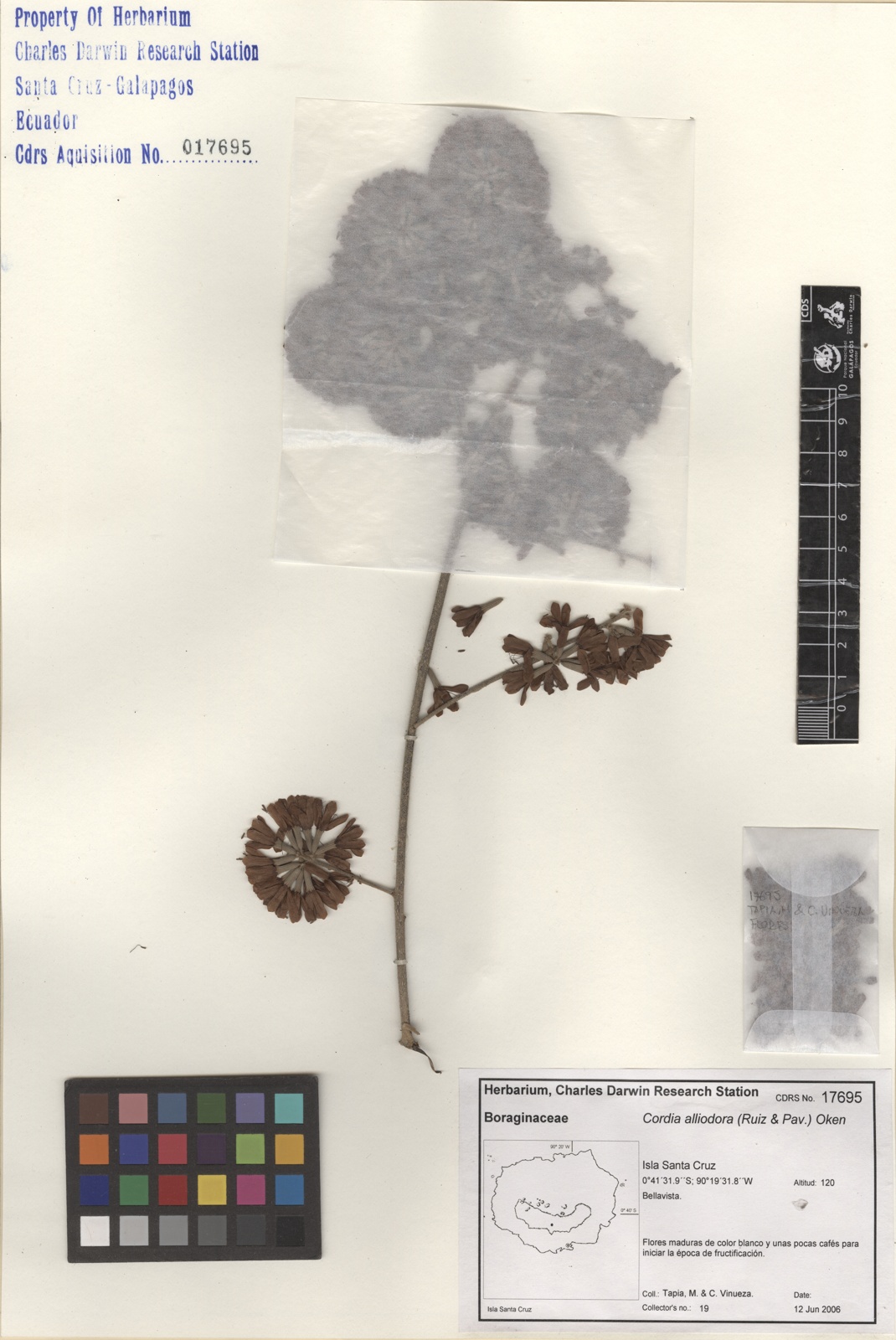
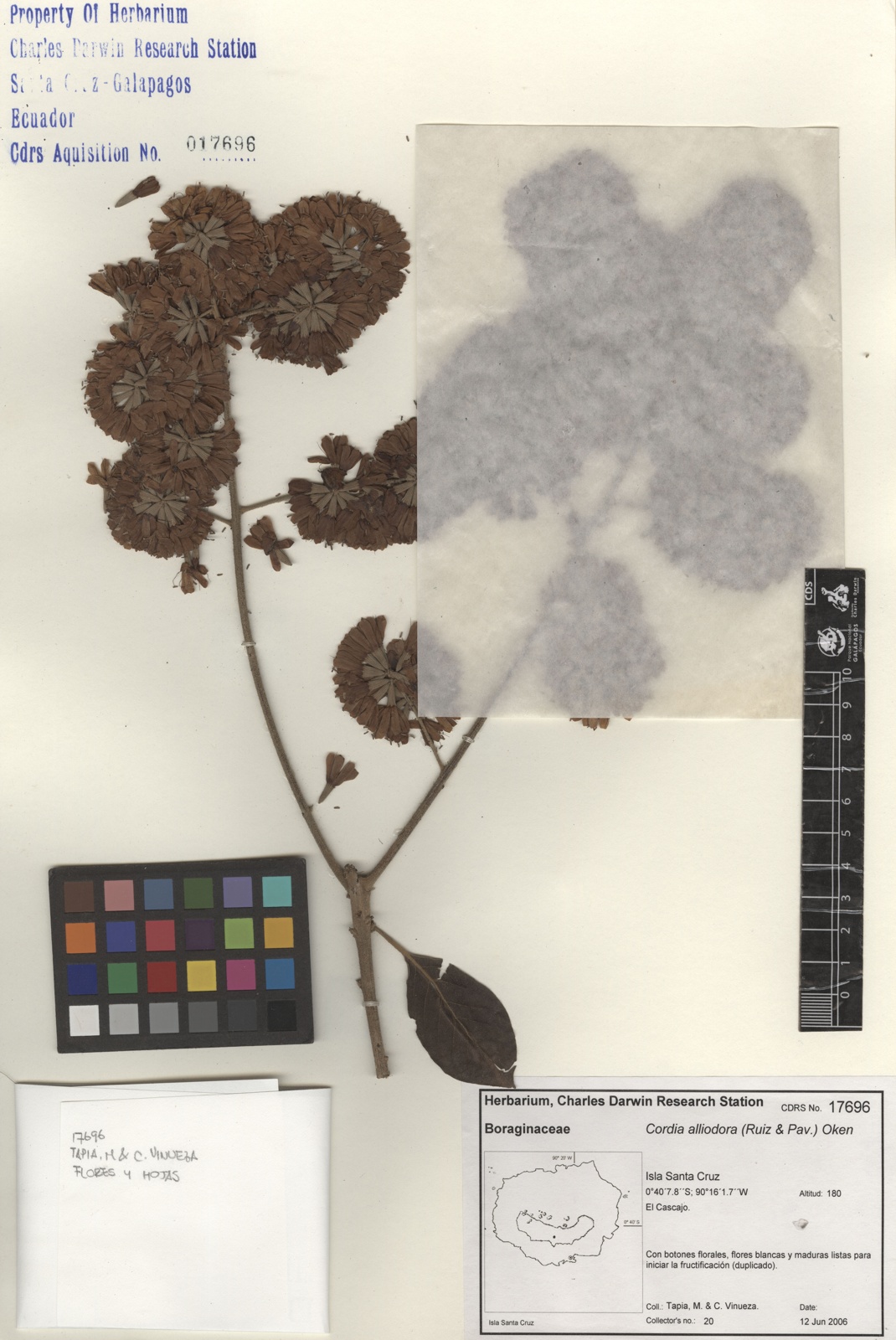


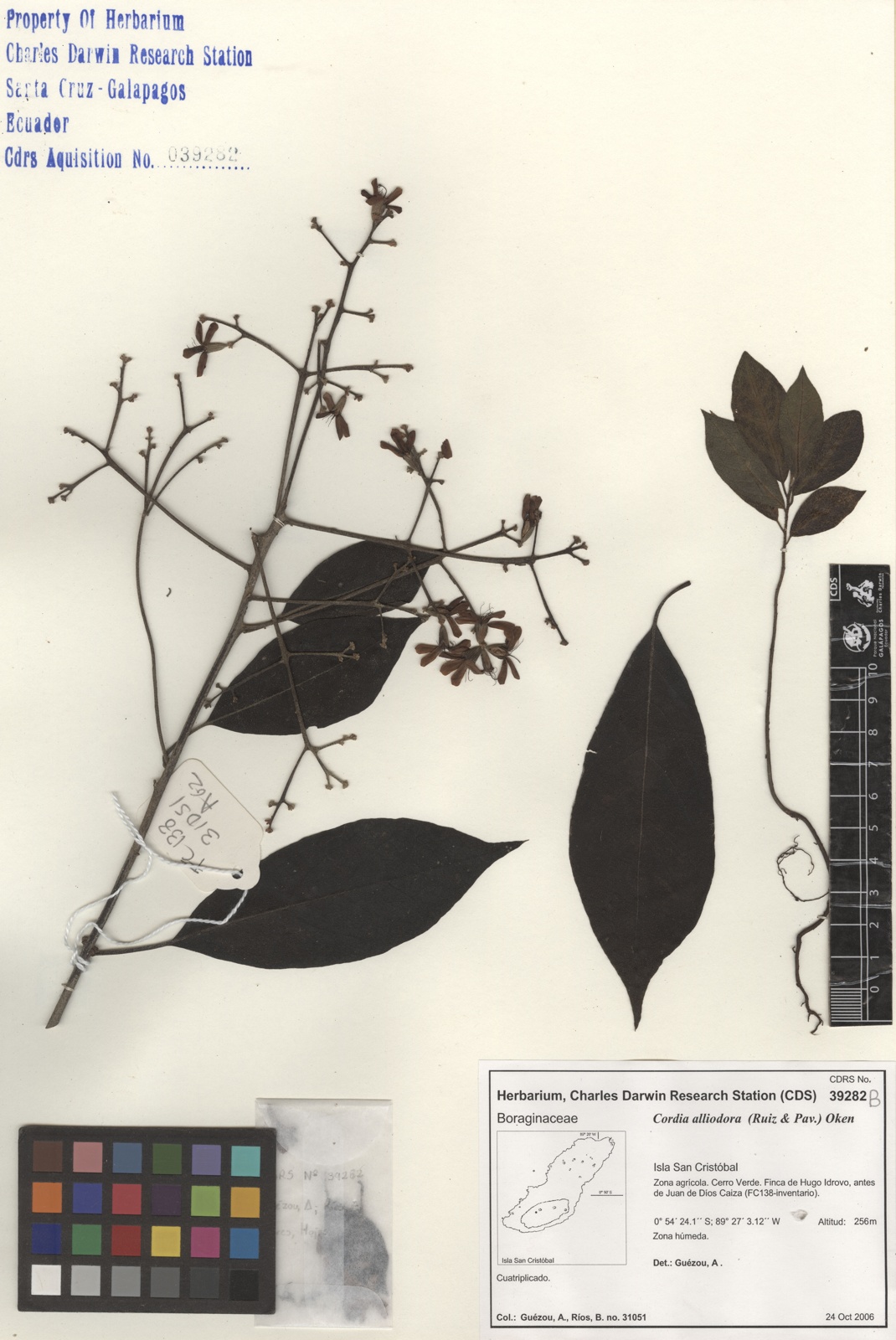
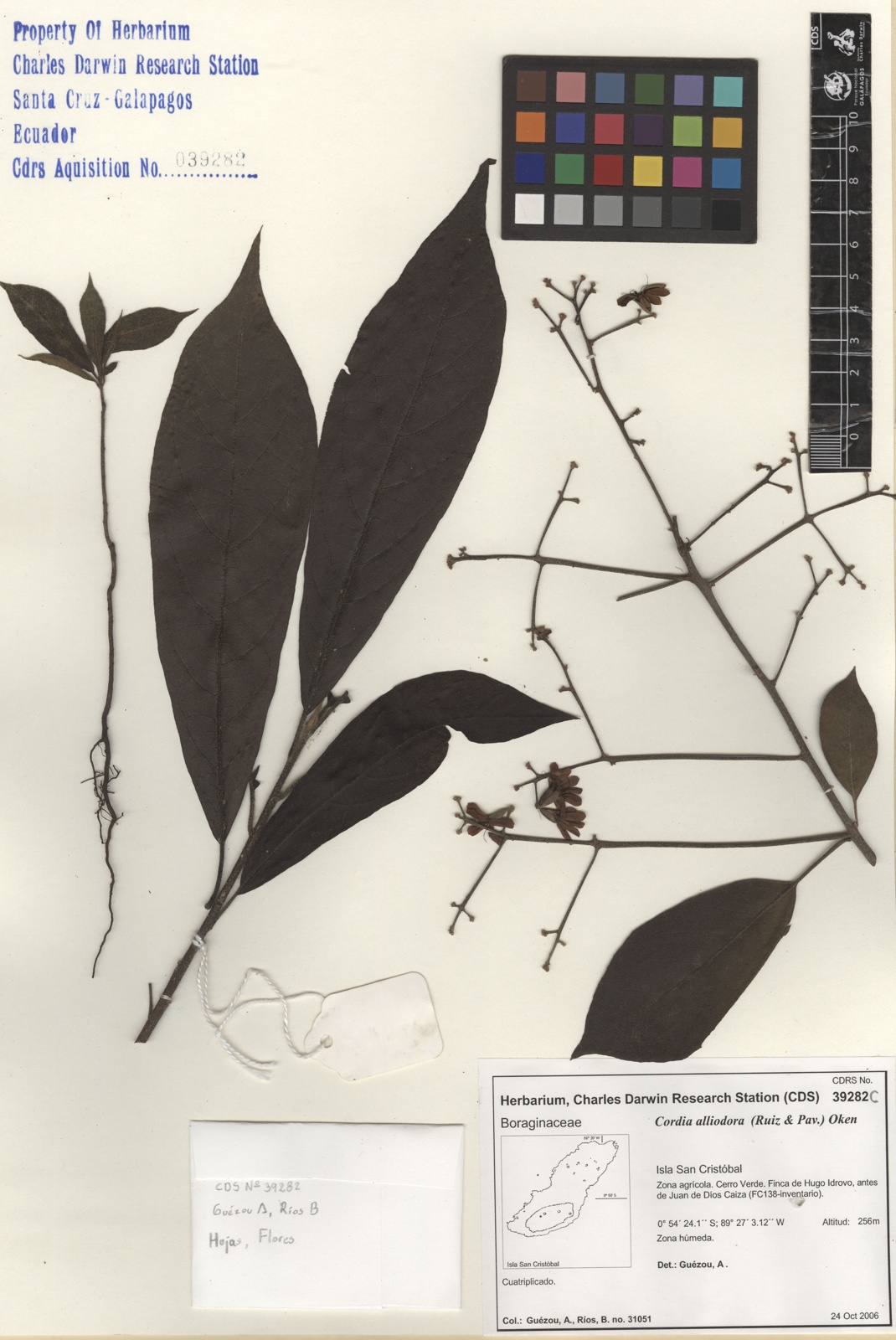
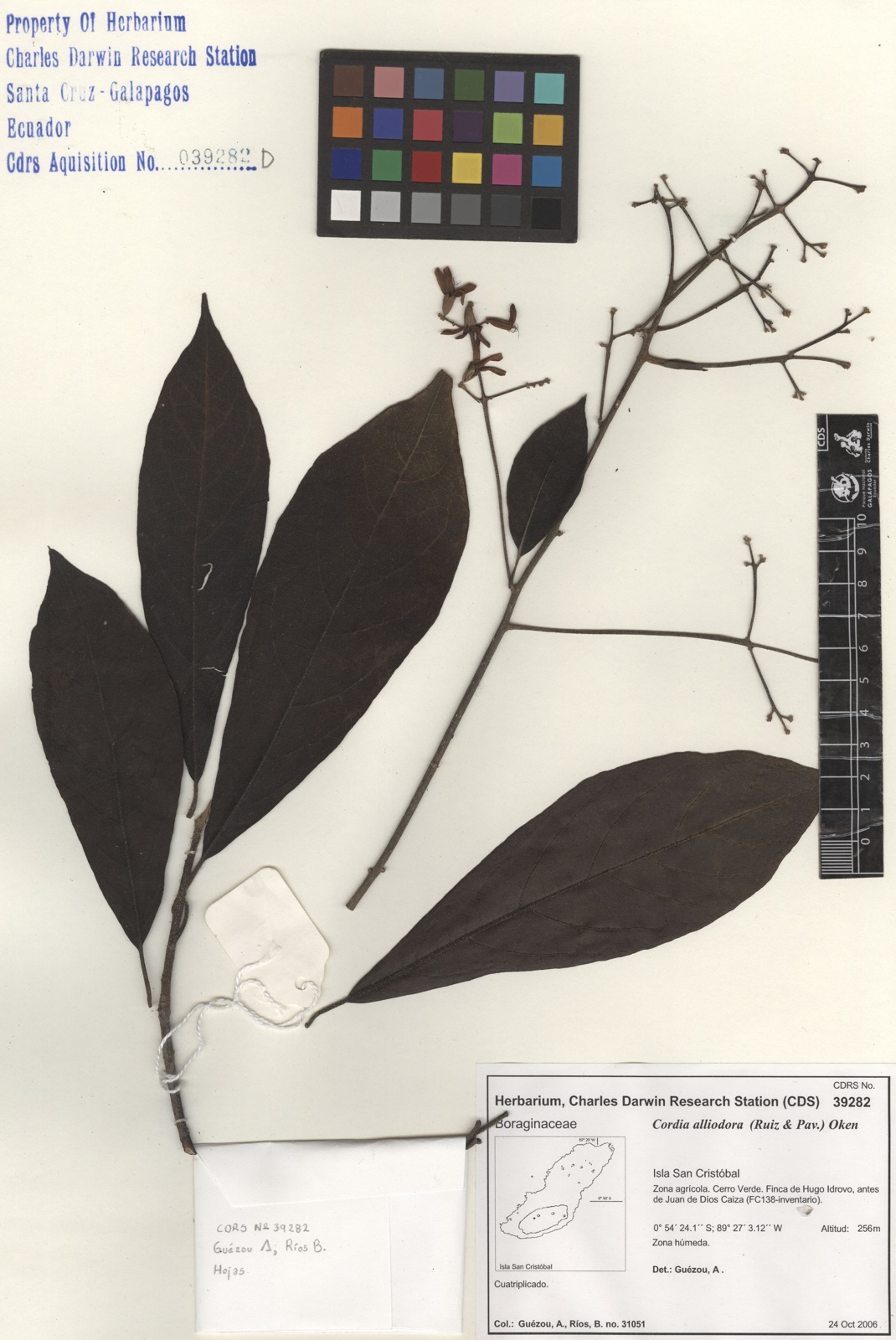

The laurel is a tall, thin tree that grows to around 20 meters high and has white flowers. Laurels are characterized by their smooth, light grey to brown bark, which can be further lightened by lichen growth on the trunk. In drier regions, this generally smooth bark can also exhibit fissures. Laurels are dioecious, which means they are split into distinct male or female trees, and lose their leaves for 1-2 months after producing seeds.
A tree 20 m high beginning to bear fruit between 4 to 5 years of age. An individual tree is either male or female. It has white flowers, and the seeds are dispersed primarily by wind. Seeds germinate between 5 to 10 days after fruit fall. Planted for timber.
Domain
Eukaryota
Kingdom
Plantae
Phylum
Magnoliophyta
Class
Magnoliopsida (= Dicotyledoneae)
Order
Lamiales
Family
Boraginaceae
Genus
Cordia
Species
alliodora
Taxon category: Accepted
Syn.: Lithocardium alliodorum Kuntze
Taxon origin: Introduced - established
Habitat preferences: In their native habitat, laurels live both in highland and lowland forests from 0-1500 meters in elevation. Laurels are tolerant of a wide range of nutrient conditions and can survive in degraded soil or abandoned agricultural land. Laurels are able to grow in light shade but direct sunlight is preferred.
Trophic role: Primary producer
Reproductive biology: The laurel begins to bear fruit between 4 to 5 years of age. Individuals are either male or female (dioecious). Seeds are dispersed primarily by wind. Seeds germinate between 5 to 10 days after fruit fall.
Growth form: Trees
Distribution origin: Central and South America
Economic Use: Planted for timber.
Mode of introduction: Intentional
Introduction Pathway: Intentional
Subpathway: Agriculture/Horticulture
Introduced status: Naturalized
Invasive status: Invasive
Impact in Galapagos: In Galapagos, it is integrated in a mixed forest of introduced and native species. Large Cordia trees grow amongst large Cedrela trees.
Impact elsewhere: Invasive in the Pacific Islands. The rapidly growing tree invades native forests and displaces native species.
Control methods elsewhere: Grubbing and treatment with herbicide is recommended but control can be difficult due to the plants' ability to readily sprout seedlings.
Year of first record: 1985
Map of specimen collection localities or observation records for this species in our collections database.
Distribution: Isabela, Santa Cruz, one male tree on Floreana. Originally from Central and South America.
- Lawesson, J.E. (s.a.) Pers. obs. field notes, collections 1985-7.
- Flores, E. (1985) Censo de Plantas Introducidas desde el Canal de Itabaca hasta Puerto Ayora. Tesis de Ingeniero Forestal, Univ. Técnica Luis Vargas Torres, Esmeraldas: 1-132.
- Chavez, J. (1993) Diagnostico de la Agricultura y la Ganader¡a en la Provincia de Galapagos. Tesis.
- Prado Erazo, G.E. (1986) Informe preliminar, Censo de especies arboreas introducidas en la zona agricola de la isla Santa Cruz. Charles Darwin Research Station, unpublished, typescript CDF library
- Jørgensen, P.M. León-Yánez, S. (eds.) (1999) Catalogue of the Vascular Plants of Ecuador. Monographs in Systematic Botany from the Missouri Botanical Garden 75. Missouri Botanical Garden Press, St. Louis, 1181 pp.
- Bacigalupo, N. Cabral, E.L. (1999) Sobre la identidad de dos especies de Lamarck, Spermacoce laevis y S. remota (Rubiaceae, Spermacoceae). Darwiniana 37: 333-334.
- Tropicos.org. (2017) Database of Missouri Botanical Garden. Tropicos.org. Missouri Botanical Garden. 06 Oct 2017 <http://www.tropicos.org
- Prado Erazo, G.E. (1988) Census of introduced of tree species in the Agricultural zone of Santa Cruz Island Annual Report 1986-1987; unpublished typescript, CDF Library
- Guézou, A. Trueman, M., Buddenhagen, E., Chamorro, S., Guerrero, A.M., Pozo, P., Atkinson, R. (2010) An extensive Alien Plan Inventory from the Inhabited Areas of Galapagos Plos One/ www.plosone.org. Volume 5/ Issue 4/e10276
- Boshier, D. H. Lamb, A. T. (1997) Cordia alliodora: Genetics and Tree Improvement University of Oxford, Oxford Forestry Institute, Department of Plant Sciences, Tropical Forestry Papers 36
- Lawesson, J.E. (1987) Plantas exóticas en las Islas Galápagos, un resumen. Memorias. Taller sobre investigación Botánica y manejo en Galápagos. Pg. 17-23.
- Lawesson, J.E. Ortiz, L. (1987) Plantas Introducidas en las Islas Galápagos Memorias. Investigación Botánica y Manejo en Galápagos. Pg.224-235
- Gardener, M. R. A. Tye and S.R. Wilkinson (1999) Control of Introduced plants in the Galapagos Islands. Twelfth Australian Weeds Conference, Tasmania Weed Society. Pp 396-400.


Dispersal propagule: Seed